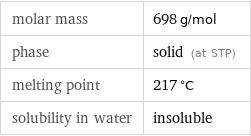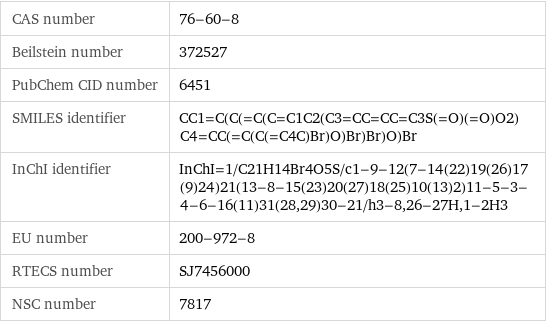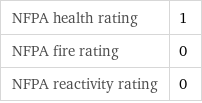Input interpretation

bromocresol green
Chemical names and formulas
![formula | C_21H_14Br_4SO_5 Hill formula | C_21H_14Br_4O_5S name | bromocresol green IUPAC name | 2, 6-dibromo-4-[9-(3, 5-dibromo-4-hydroxy-2-methyl-phenyl)-7, 7-dioxo-8-oxa-7λ 6 -thiabicyclo[4.3.0]nona-1, 3, 5-trien-9-yl]-3-methyl-phenol alternate names | bromcresol green | tetrabromo-m-cresolphthalein sulfone mass fractions | Br (bromine) 45.8% | C (carbon) 36.1% | H (hydrogen) 2.02% | O (oxygen) 11.5% | S (sulfur) 4.59%](../image_source/44f72474b72c35649e228d80d0cfe19d.png)
formula | C_21H_14Br_4SO_5 Hill formula | C_21H_14Br_4O_5S name | bromocresol green IUPAC name | 2, 6-dibromo-4-[9-(3, 5-dibromo-4-hydroxy-2-methyl-phenyl)-7, 7-dioxo-8-oxa-7λ 6 -thiabicyclo[4.3.0]nona-1, 3, 5-trien-9-yl]-3-methyl-phenol alternate names | bromcresol green | tetrabromo-m-cresolphthalein sulfone mass fractions | Br (bromine) 45.8% | C (carbon) 36.1% | H (hydrogen) 2.02% | O (oxygen) 11.5% | S (sulfur) 4.59%
Lewis structure

Draw the Lewis structure of bromocresol green. Start by drawing the overall structure of the molecule, ignoring potential double and triple bonds: Count the total valence electrons of the bromine (n_Br, val = 7), carbon (n_C, val = 4), hydrogen (n_H, val = 1), oxygen (n_O, val = 6), and sulfur (n_S, val = 6) atoms: 4 n_Br, val + 21 n_C, val + 14 n_H, val + 5 n_O, val + n_S, val = 162 Calculate the number of electrons needed to completely fill the valence shells for bromine (n_Br, full = 8), carbon (n_C, full = 8), hydrogen (n_H, full = 2), oxygen (n_O, full = 8), and sulfur (n_S, full = 8): 4 n_Br, full + 21 n_C, full + 14 n_H, full + 5 n_O, full + n_S, full = 276 Subtracting these two numbers shows that 276 - 162 = 114 bonding electrons are needed. Each bond has two electrons, so in addition to the 48 bonds already present in the diagram we expect to add 9 bonds. To minimize formal charge oxygen wants 2 bonds and carbon wants 4 bonds. Identify the atoms that want additional bonds and the number of electrons remaining on each atom: Add 9 bonds by pairing electrons between adjacent highlighted atoms. Additionally, atoms with large electronegativities can minimize their formal charge by forcing atoms with smaller electronegativities on period 3 or higher to expand their valence shells. The electronegativities of the atoms are 2.20 (hydrogen), 2.55 (carbon), 2.58 (sulfur), 2.96 (bromine), and 3.44 (oxygen). Because the electronegativity of sulfur is smaller than the electronegativity of oxygen, expand the valence shell of sulfur to 6 bonds. Therefore we add a total of 11 bonds to the diagram. Note that the six atom rings are aromatic, so that the single and double bonds may be rearranged: Answer: | |
3D structure

3D structure
Basic properties

molar mass | 698 g/mol phase | solid (at STP) melting point | 217 °C solubility in water | insoluble
Units

pH sensitivity

pH range | color change 3.8 to 5.4 | yellow to blue
Chemical identifiers

CAS number | 76-60-8 Beilstein number | 372527 PubChem CID number | 6451 SMILES identifier | CC1=C(C(=C(C=C1C2(C3=CC=CC=C3S(=O)(=O)O2)C4=CC(=C(C(=C4C)Br)O)Br)Br)O)Br InChI identifier | InChI=1/C21H14Br4O5S/c1-9-12(7-14(22)19(26)17(9)24)21(13-8-15(23)20(27)18(25)10(13)2)11-5-3-4-6-16(11)31(28, 29)30-21/h3-8, 26-27H, 1-2H3 EU number | 200-972-8 RTECS number | SJ7456000 NSC number | 7817
NFPA label

NFPA label

NFPA health rating | 1 NFPA fire rating | 0 NFPA reactivity rating | 0
Toxicity properties

odor | odorless

RTECS classes | mutagen